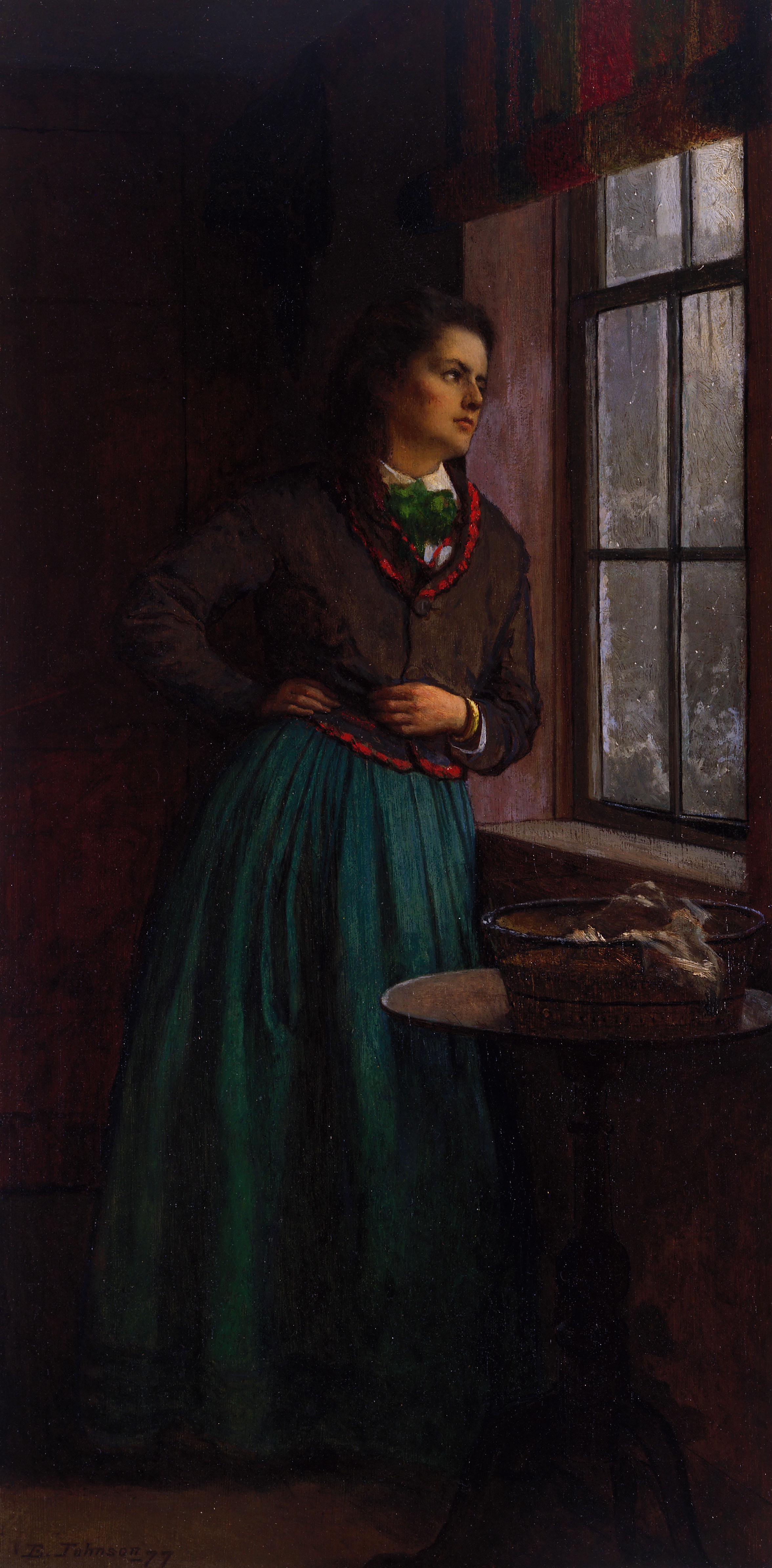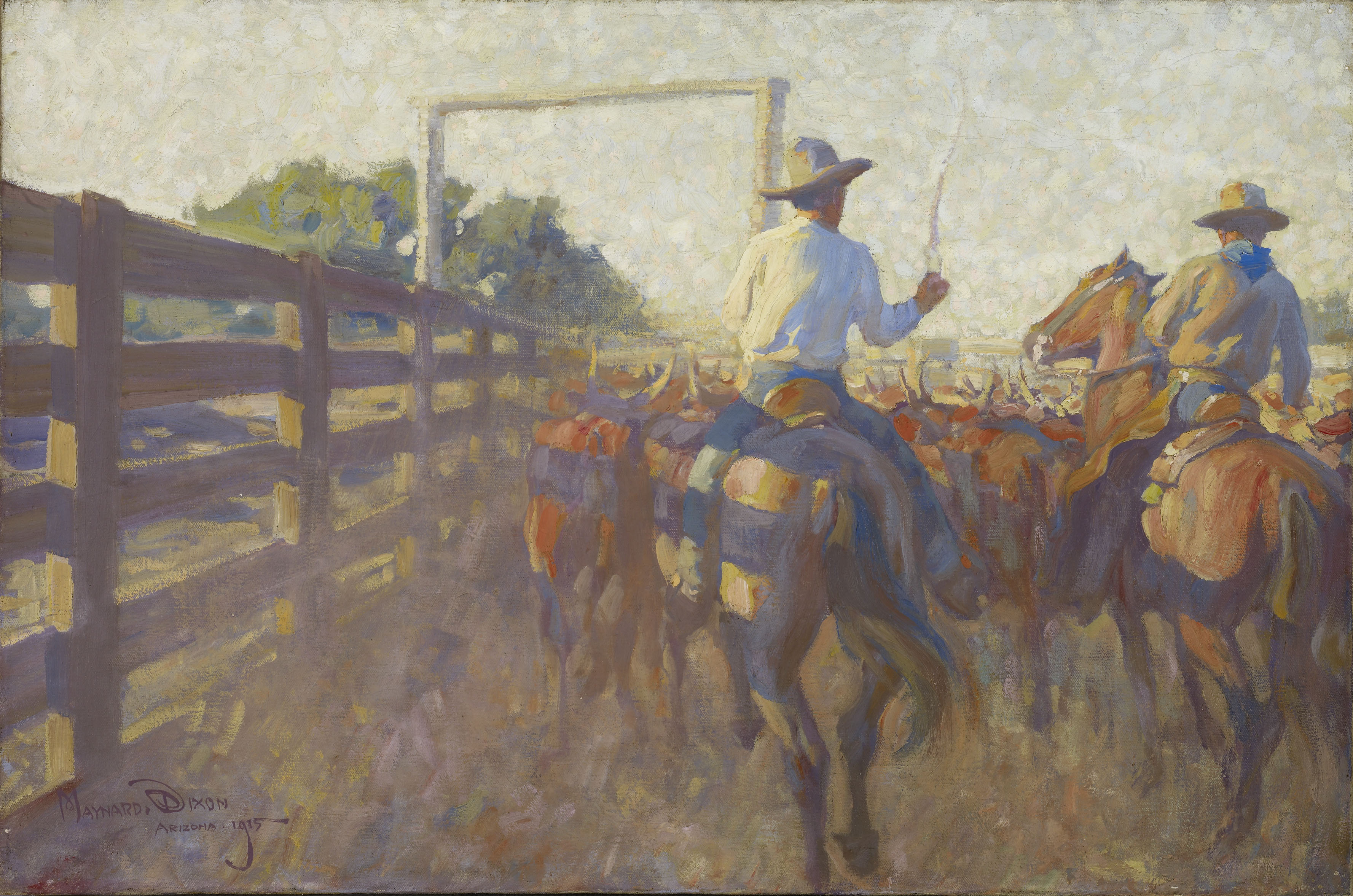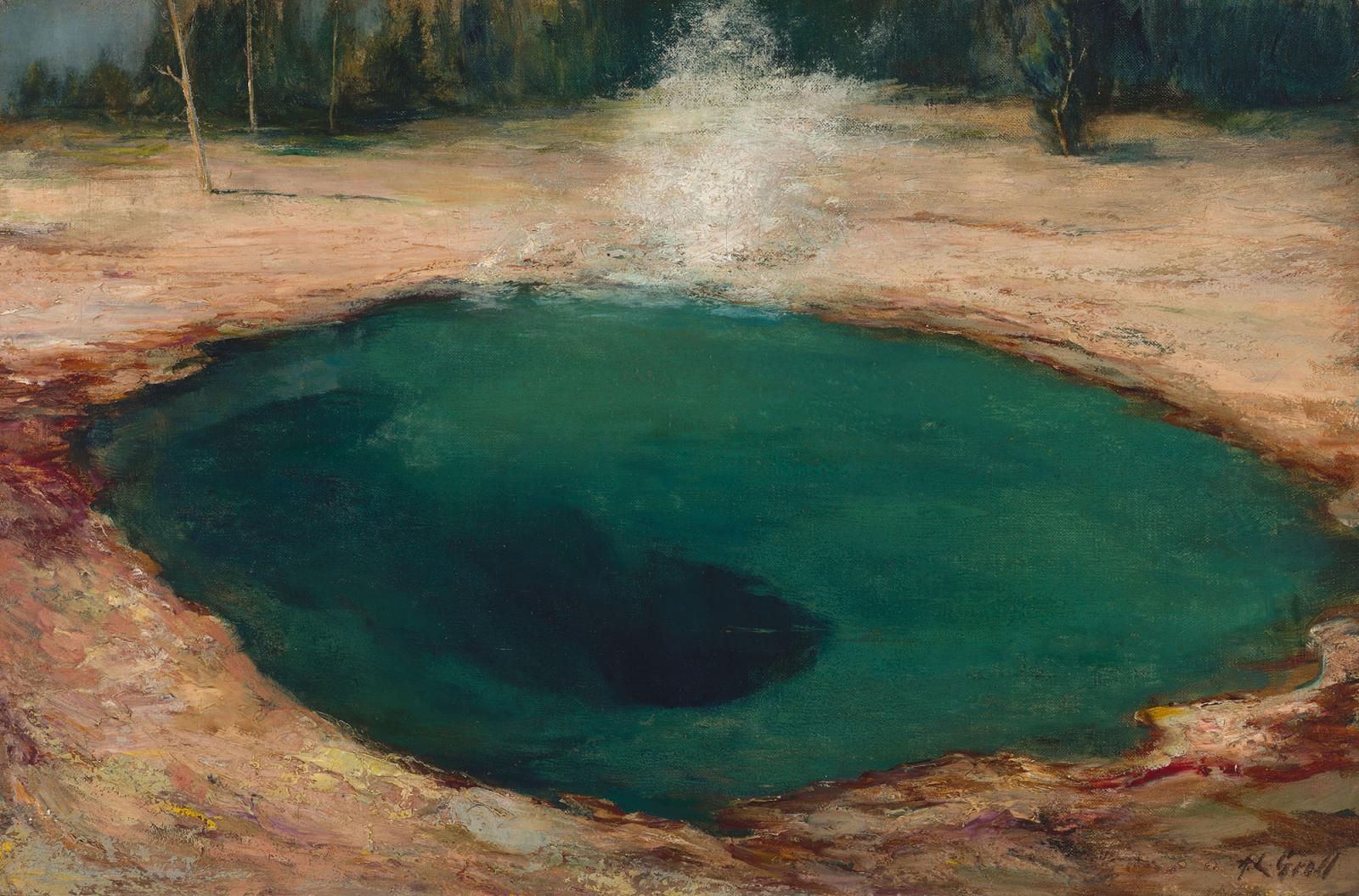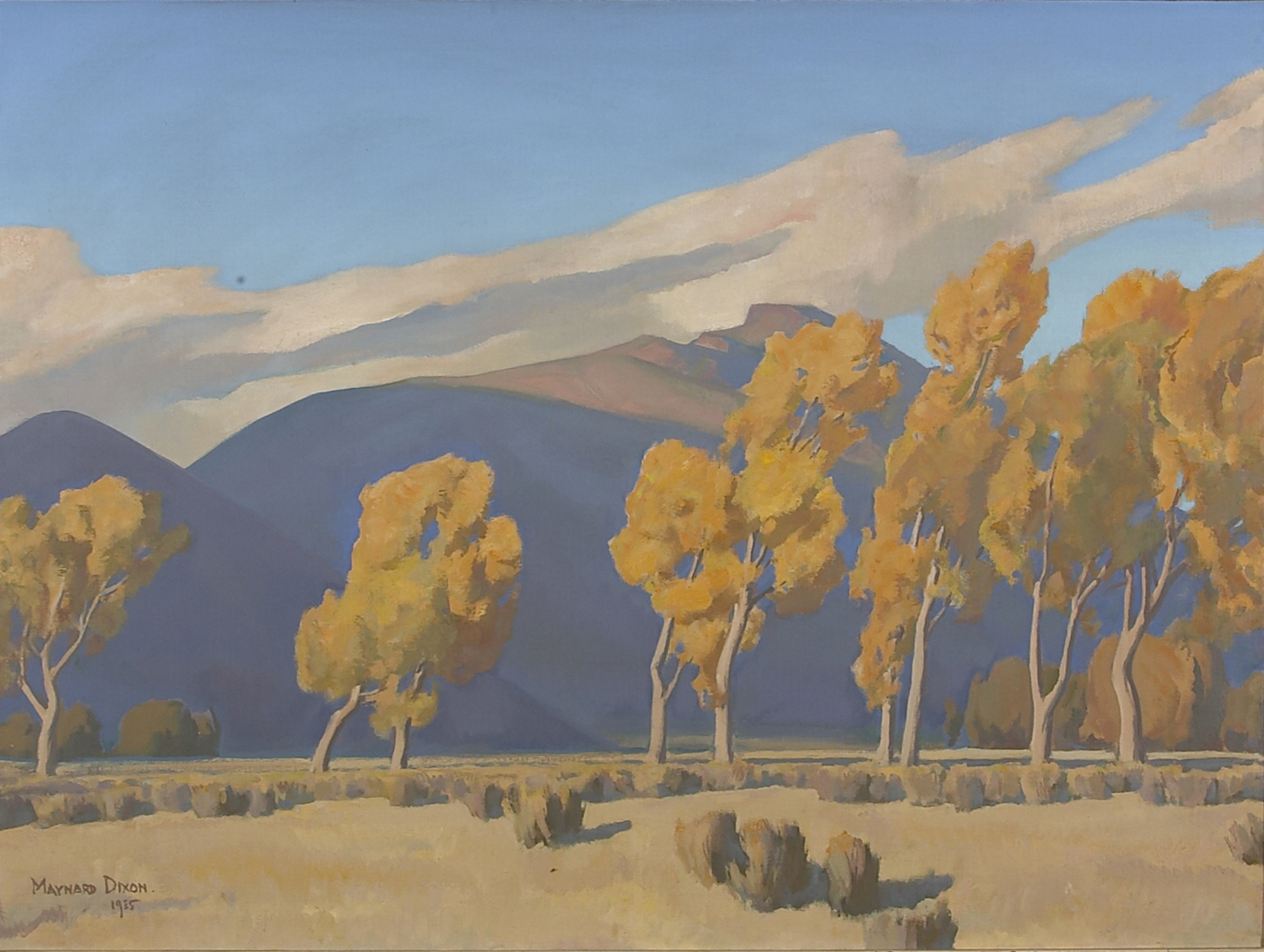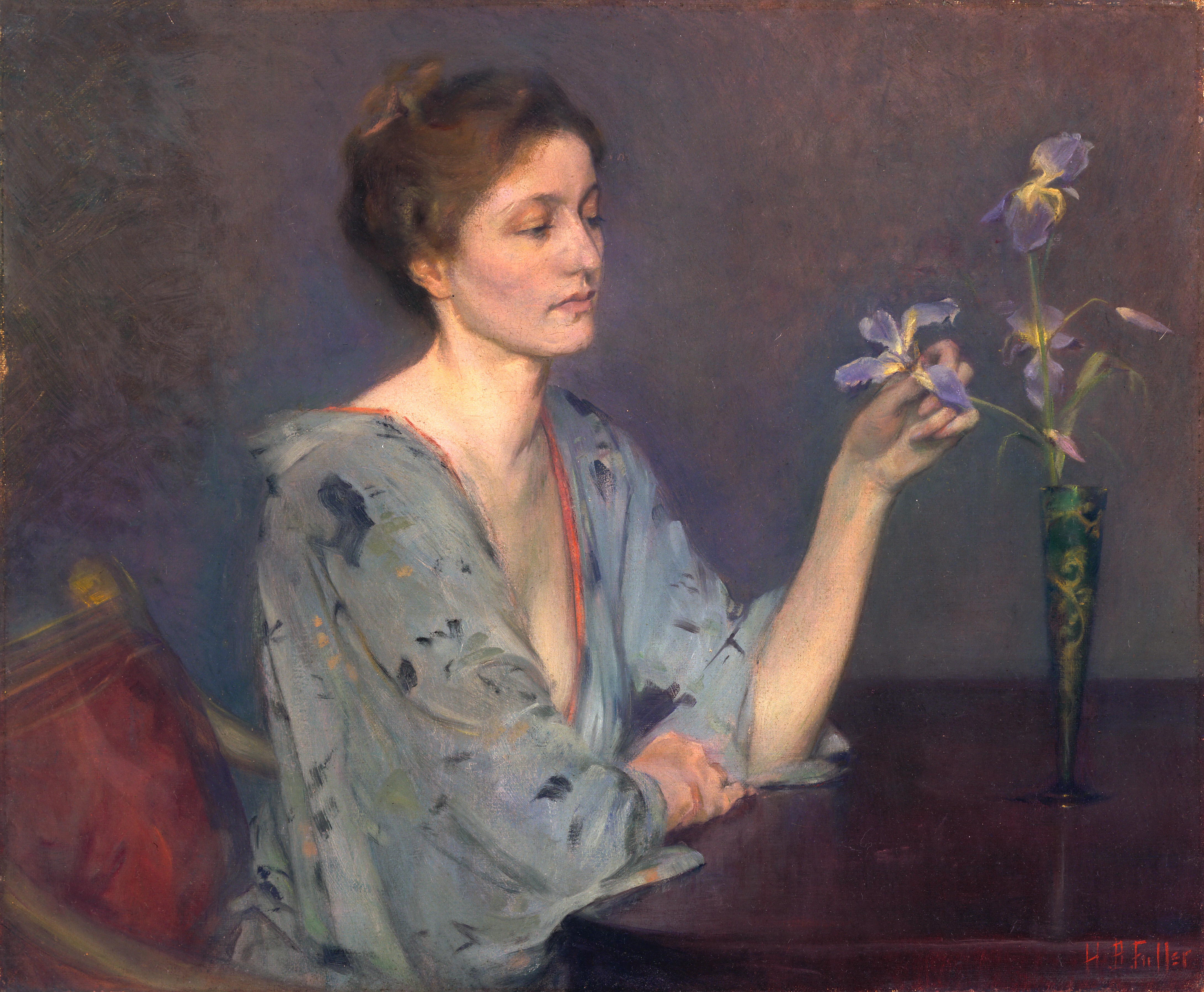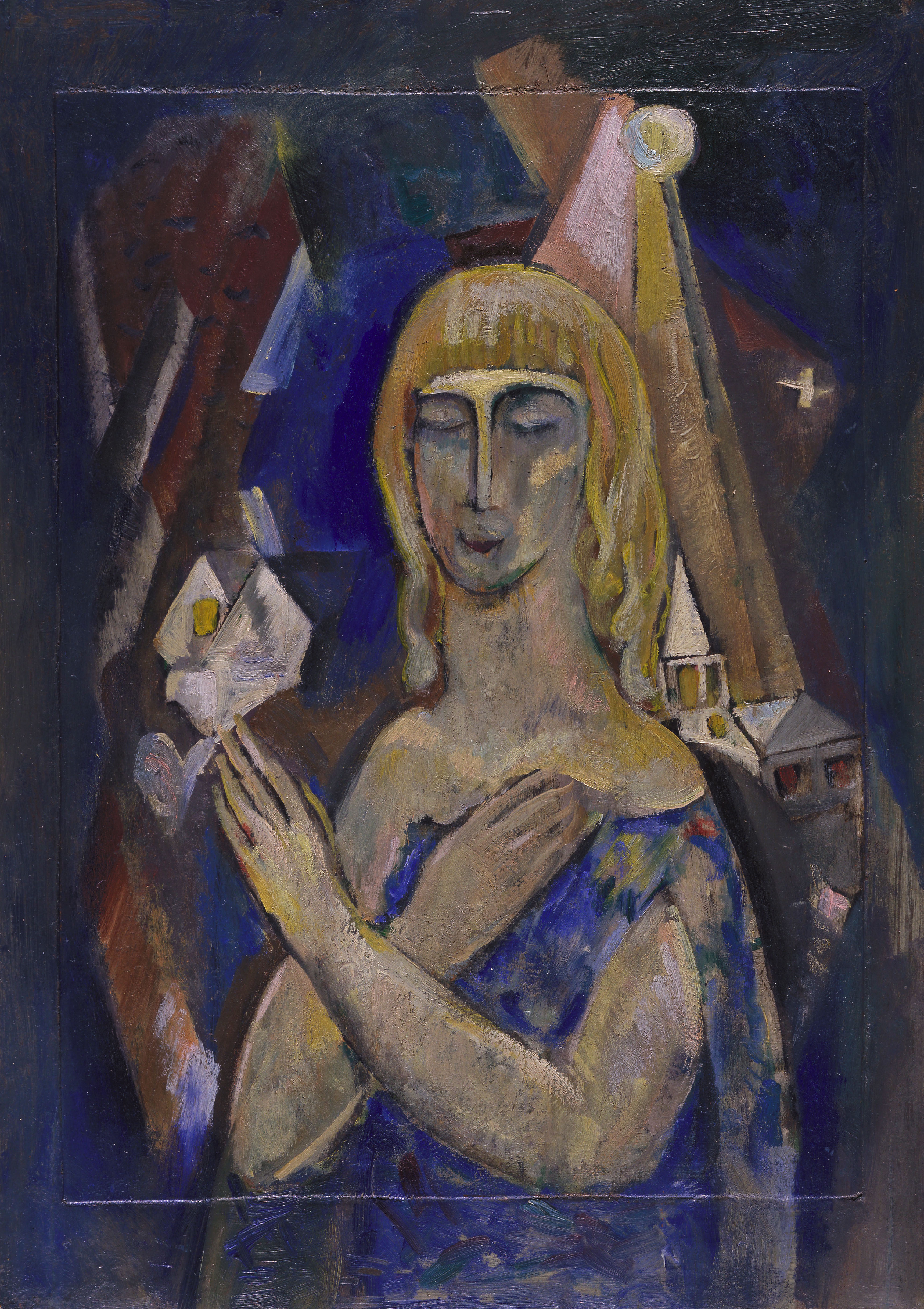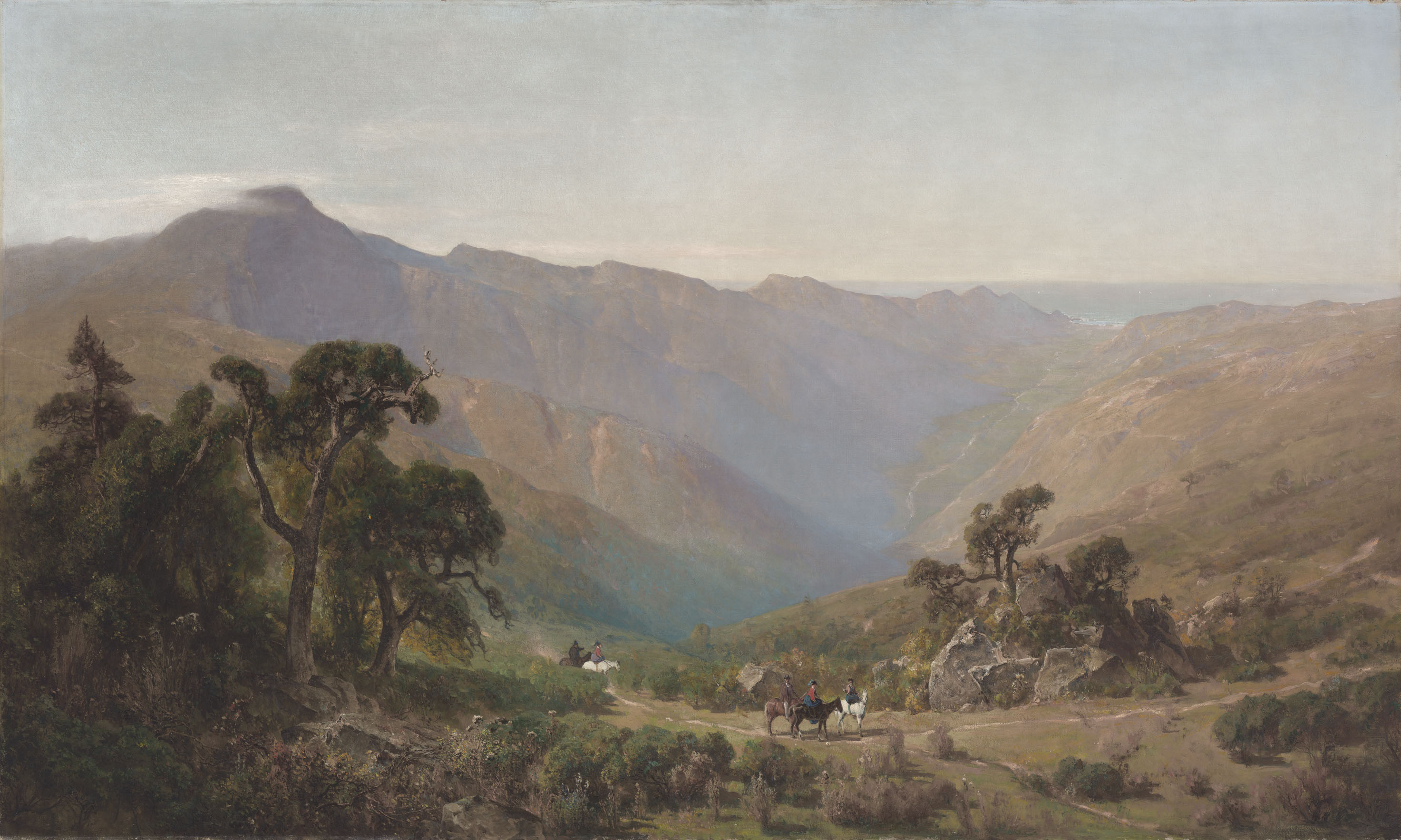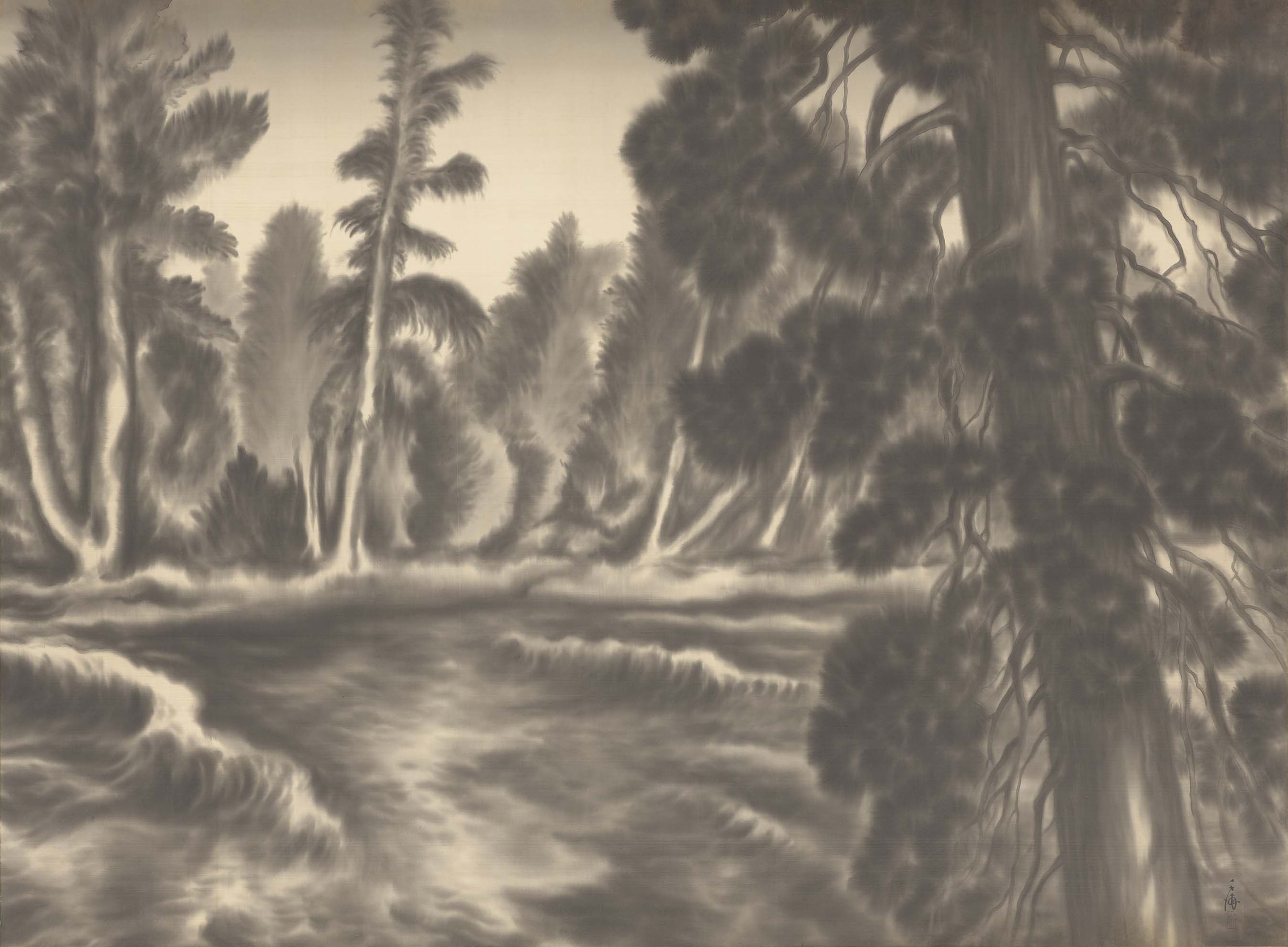Harvest Time
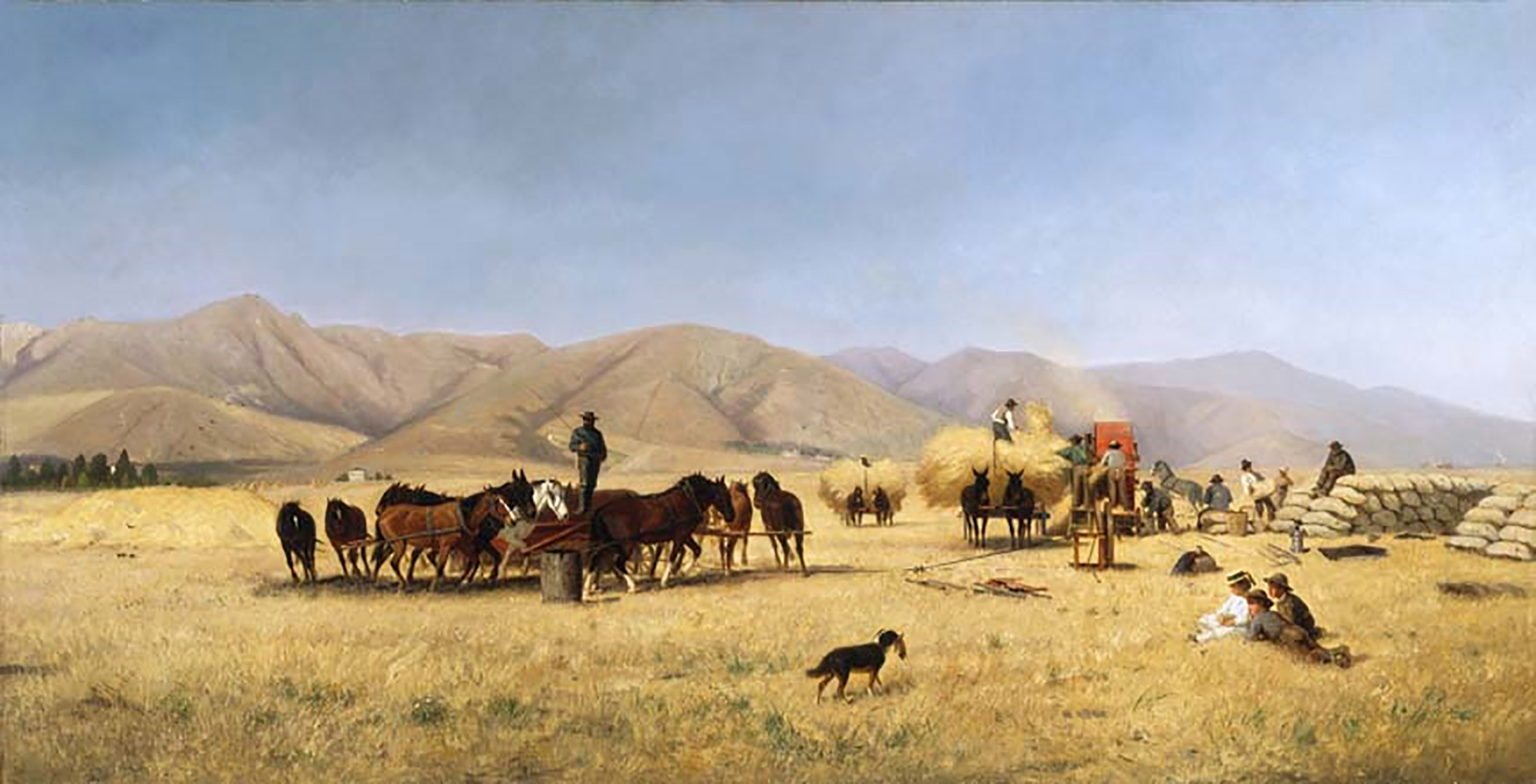
What drew you to California?
In the decade following the Civil War, agriculture supplanted mining as California’s dominant industry. By 1881, four million acres of wheat (termed “grower’s gold” in the press) were under cultivation; valued at $34 million, wheat was worth twice that of the gold mined the same year. Hahn’s panoramic view of a wheat harvest in the Sacramento River Valley celebrates a modern—and mechanized—agricultural production in California, widely deemed the “cornucopia of the world.”
